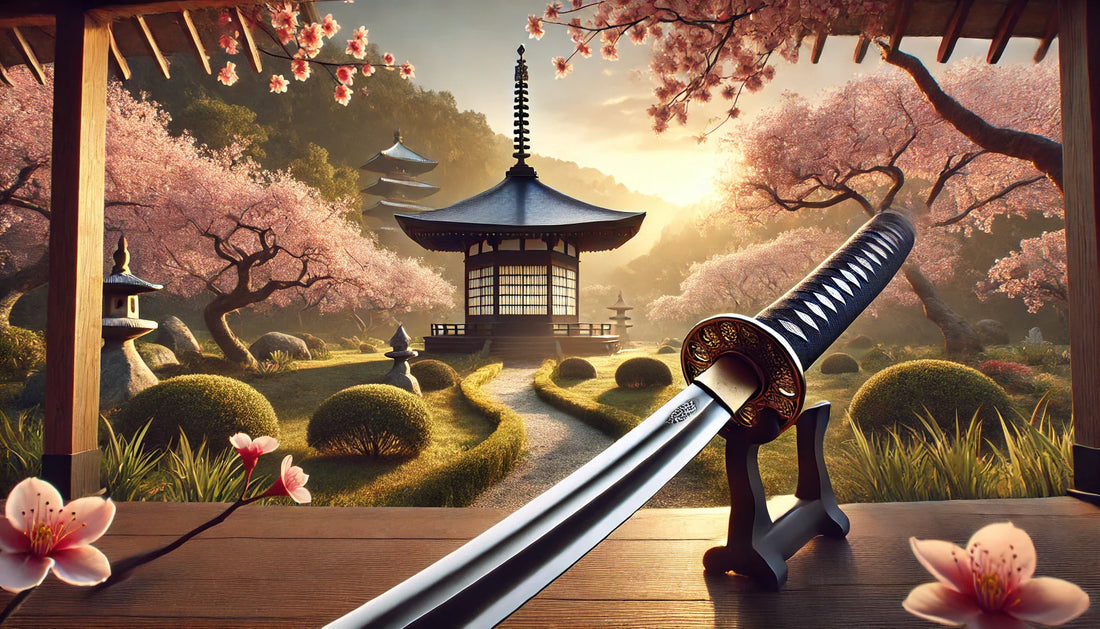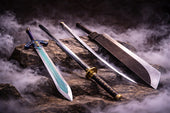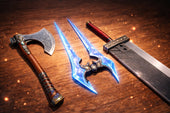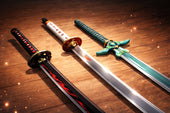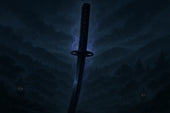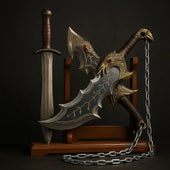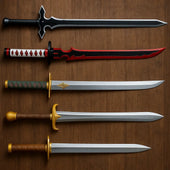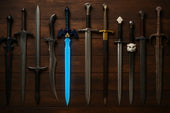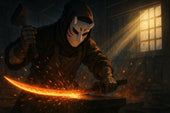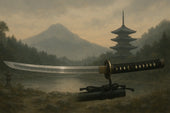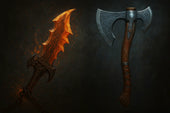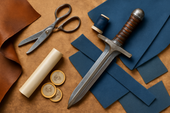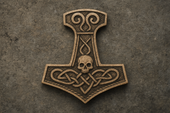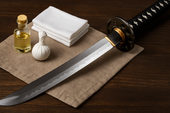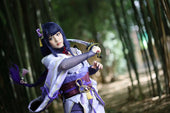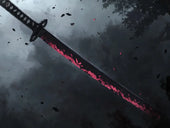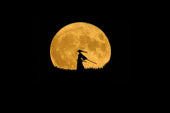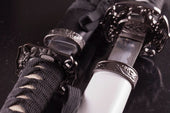The traditional katana has long stood as an icon of Japanese culture and craftsmanship. Renowned worldwide for its elegance, efficiency, and profound symbolism, the katana is much more than simply a blade; it represents centuries of history, skill, and cultural evolution.
At The Sword Stall, we appreciate the intricacies and subtleties of each katana design. Today, we'll explore the unique blade designs that define traditional katanas and the fascinating features that have captivated collectors and martial artists alike for generations.
What Defines a Traditional Katana Blade?
To fully appreciate traditional katana blade designs, it’s essential first to understand what precisely a katana is. Originating in feudal Japan, the katana emerged as the preferred sword of the samurai, replacing earlier tachi swords due to its superior design for combat situations.
Distinctive features set the katana apart from other blades. The most recognisable characteristic is its gentle curvature—known as the sori—which optimises cutting ability and enhances handling. A katana typically has a single-edged blade and a meticulously crafted temper line called the hamon, making it easily identifiable and aesthetically striking.
Traditionally, the katana wasn't used alone but paired with the wakizashi, a shorter companion sword, forming a set called a daisho. The wakizashi, often measuring between 30–60 centimetres, was ideal for close-quarter combat and indoor defence, highlighting its versatility. Together, these swords symbolised the social status and martial preparedness of the samurai, demonstrating both practical use and cultural significance.
Brief History of the Katana
The katana developed predominantly during the Muromachi period (1336-1573), becoming an indispensable tool for the samurai class. Unlike earlier Japanese swords, the katana featured enhanced forging techniques, unique curvature, and a stronger blade, making it highly effective both in battlefield scenarios and close combat situations. Over time, the katana evolved from a purely practical weapon into an artistic expression of the smith’s craftsmanship.
Understanding Katana Blade Anatomy
To truly grasp the artistry behind different katana blade designs, one must understand its anatomy:
-
Kissaki: The blade's tip, integral to piercing and slashing.
-
Ha: The sharp cutting edge, the primary contact surface during combat.
-
Shinogi: The ridge line running along the blade, strengthening and stabilising it.
-
Hamon: The wavy or straight temper line, resulting from traditional clay tempering.
-
Nakago: The tang or handle portion, often signed by the swordsmith.
Understanding these anatomical elements allows one to appreciate the fine details and functionality behind various katana designs.
Types of Traditional Katana Blade Designs
The diversity within traditional katana blade designs is striking. Each variant presents distinctive features reflecting different martial arts styles, historical periods, and user preferences. Let's delve into some of the most recognised katana designs.
1. Shinogi-Zukuri
The Shinogi-Zukuri design is perhaps the most prevalent katana blade style. Characterised by a prominent shinogi ridge line, it clearly defines the blade’s structure and enhances durability. Another feature is the yokote, a defined line separating the kissaki from the rest of the blade, providing an elegant yet practical finishing touch.
Historically favoured for its strength and versatility, this style remains popular among collectors and martial arts practitioners today, balancing form and function seamlessly.
2. Shobu-Zukuri
Distinct from Shinogi-Zukuri, the Shobu-Zukuri lacks the yokote, offering a more fluid appearance from the blade's body to its tip. This design reduces resistance during cutting motions, making it ideal for practitioners who value swift, decisive strikes.
Shobu-Zukuri blades were historically preferred by warriors who favoured speed and precision over brute strength. Today, collectors appreciate this design for its understated elegance and streamlined efficiency.
3. Unokubi-Zukuri
A rarer and aesthetically striking variant, the Unokubi-Zukuri blade tapers noticeably from the shinogi ridge line to the mune (spine), giving the blade a distinctive, narrowed appearance near the kissaki. This design reduces weight without compromising structural integrity, offering excellent manoeuvrability.
Historically, Unokubi-Zukuri blades were often favoured by samurai requiring speed and agility. For modern practitioners, they provide unique handling characteristics, highly valued in traditional martial arts such as iaido and kenjutsu.
4. Kissaki Variations (Blade Tips)
The kissaki, or blade tip, greatly influences a katana's functional capabilities and visual appeal. Three main kissaki types exist:
-
Ko-Kissaki: A small tip, common in earlier periods. Provides quick thrusting and puncture capability.
-
Chu-Kissaki: A medium-sized tip, widely used for its balanced performance in both thrusting and cutting.
-
O-Kissaki: A long tip, prevalent during later periods, offering increased cutting edge length for powerful sweeping cuts.
The choice of kissaki typically aligns with specific martial arts styles and historical periods, each bringing its own unique advantages and aesthetics.
The Importance of the Hamon (Temper Line)
Arguably one of the most fascinating and distinctive features of a katana is the hamon, the visible temper line resulting from a traditional clay tempering process. Applying clay to the blade before quenching results in differentiated hardness levels within the steel, creating the blade's exceptional resilience and cutting capabilities.
Different hamon patterns include:
-
Suguha: Straight, elegant temper line, symbolising simplicity and purity.
-
Midare: An irregular, wavy line, offering visually striking complexity.
-
Choji: Clove-shaped temper line, regarded as especially beautiful and intricate.
Beyond aesthetics, the hamon reinforces the blade, significantly improving performance, durability, and resistance to fracturing.
Craftsmanship and Modern Appreciation of Traditional Katana Designs
Crafting a traditional katana is a meticulous process, reflecting profound mastery. Swordsmiths use the historic method of folding steel repeatedly to refine and purify it, then apply clay tempering to achieve the optimal balance of hardness and flexibility.
Today, traditional katana designs fascinate enthusiasts, collectors, and martial artists. Whether admired for historical significance, martial functionality, or pure aesthetic beauty, each traditional katana represents a masterpiece of metallurgy and artistic expression.
For those keen to delve deeper into how these timeless techniques are preserved today, BBC Travel's insightful documentary Handmade in Japan provides a captivating glimpse into modern Japanese swordsmiths who continue to uphold and honour these centuries-old traditions.
Moreover, the katana has captured the imagination of global audiences through iconic film portrayals, from the epic duels of Seven Samurai and The Last Samurai to the stylish combat sequences in Quentin Tarantino’s Kill Bill. These cinematic depictions have significantly contributed to popularising traditional katana designs and increased appreciation among collectors and martial arts enthusiasts alike.
Discovering the Timeless Artistry of Katana Blade Designs
Exploring traditional katana blade designs reveals a blend of practical combat functionality and artistic beauty. From the prominent ridge of Shinogi-Zukuri to the streamlined elegance of Shobu-Zukuri and the unique tapered Unokubi-Zukuri, each blade style tells a story about its historical usage and the incredible skill required for its creation.
At The Sword Stall, we proudly present authentic traditional katanas, inviting enthusiasts to connect with history and craftsmanship at its finest.


